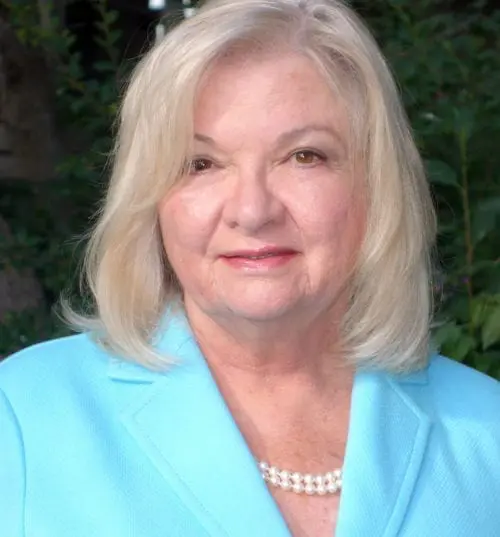
Mention retirement or downsizing and the implication is of something less than what was. Not all downsizers are retirees, and not all retirees downsize, but those do are actually looking for more — a home that reflects the way they want to live now, that is uniquely personal and is adaptable enough to meet future life changes.
Potential buyers in both groups have owned prior homes, which means they bring higher expectations to the process. While square footage and possibly location might be negotiable, few are willing to sacrifice lifestyle. Design experts say they have a good sense of what they want and often are not willing to compromise on those features.
“Once a client figures out they are really ready to retire, they are focused on maybe having this be their last house,” says Pamela Harvey, owner of an eponymous design firm that works with clients in Washington, D.C. and Tampa, Florida. “They put a lot of thought into how are we going to live and function in this house.”
Not only are retirement homes smaller, but for a some they also mean consolidating more than one home. “Smaller homes do not mean going light on the finishes. In fact, because of the smaller size, people are able to put more money into the finishes and specifications because there are less of them,” says Stephanie Gentemann, owner of g2Design in Hilton Head.
“I am finding people want higher amenities and smaller square footage,” shares Wayne Visbeen, a Michigan architect who frequently designs homes for both downsizers and retirees. “It really is about the space they want to live in.”
It’s All About Thoughtful Design – and Natural Light
Michael and Kathleen Genrich recently exchanged their 3,500 square foot family home with formal living and dining rooms for a 2,200 square foot new construction in a 55-plus community in Terramor, a new master planned community in California. Initially what impressed them the most about their new home was how expansive the main living area seemed. “When you walk into our house, you look all the way through from the front door all the way out to the back. It’s a pretty impressive view when you walk in. It makes the house seem much larger and more open than it does from the outside. It’s a 60-foot run from the front door to the back,” explains Michael Genrich.
“High ceilings and an abundance of windows are important in smaller spaces because it makes them feel much more spacious and voluminous,” says Gentemann.
Most new homes have a strong indoor-outdoor connection, but this synergy is even more vital when square footage is reduced, and houses geared toward older owners usually bring even higher expectations for natural light and bringing the outdoor experience inside.
“We take our windows deeper by six inches just to let in more light,” says Matt Sauls, vice president of marketing and product development at Pardee Homes. Rather than “a bunch of slider windows,” he says, they might use a big pane of glass that’s six inches deeper, “to get the very big unobstructed view that makes that space feel even larger. I think that windows are hugely important to make the home feel big. I also think that volume is important.” Rather than a standard 9-foot ceiling, the ceilings in their 55-plus plans are 10, 11 or 12 feet.
One Level or Two?
Single level vs. two stories? It really depends on the individual, but most builders say the post-55 group generally is looking for first floor masters, even if there are other bedrooms on a second level. Depending on the price bracket of the home, in homes with more than one story, designers and architects plan for future elevators by stacking closets that can be converted in the future.
Jay Kallos, senior vice president of architecture for Ashton Woods, says it is essential to include “all the must-haves on the first floor.”
More Flex Spaces
Central to the DNA of these homes is flexibility – especially the ability to use spaces in multiple ways. Having a space that could be adapted into an office for both was important to the Genrichs, who work from a home base.
To demonstrate how flexibility can make a small home live larger, Visbeen points to his own live-work space, a 640 square foot, 20-by-32-foot area which includes a “total luxury” kitchen, dining and living areas. A large island includes a concealed table that pops out to add room for additional people or serving. A rectangular dining table hugs a wall, saving 48 inches of traffic spaces. However, the table can fit up to 14 people. “We have a 10-foot leather bench that takes our table and makes it a six to eight top very easily. When the table grows, we can sit 10 using that same bench. And when we have a larger group, we can turn the table 90 degrees into the traffic area and seat 14.”
Thoughtful design also means planning for life changes. Visbeen’s plans integrate adaptable spaces that can be purposed for multiple uses from offices and studies to extra bedrooms. “Flex rooms have become almost a staple in my architectural vocabulary,” he adds.
“This buyer more than any needs a plan that offers flexibility to meet the avalanche of needs known and unknown. We try to create one space that can be reimagined by each and every buyer – from a formal dining room, a public study, a private office, a studio, craft room, a snore suite – one space that can take on multiple needs,” explains Kallos.
Aging in Place
Kallos says they plan for this group to age in place by widening some doorways and including blocking for future grab bars or include non-institutional looking railing in bathrooms, but these adaptations are not evident. “They do not want their home to visually imply that they are getting up there in years,” he says.
Other buyers are aware of the need to plan for the future and specify a home in which they can age in place. Still, the end result is more likely to be a jewel box rather than a plain vanilla box.

Camilla McLaughlin is an award-winning writer specializing in house and home. Her work has appeared in leading online and print publications, such as Yahoo! Real Estate, Unique Homes magazine and Realtor magazine. She has also freelanced for the Associated Press.
 How to Prepare for an Open House
How to Prepare for an Open House